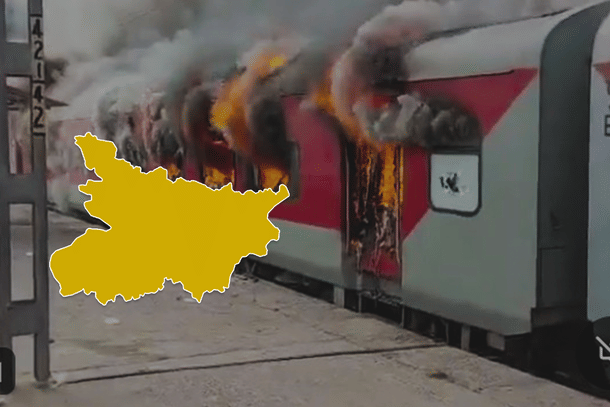Politics
Agnipath Scheme Likely To Upset 'Coaching Ecosystem'; Is That The Source Of Protests?
Pratim Ranjan Bose
Jun 18, 2022, 01:41 PM | Updated 01:40 PM IST
Save & read from anywhere!
Bookmark stories for easy access on any device or the Swarajya app.


Theoretically, there can be three main causes of protests: A case of injustice, stirring a hornet's nest, and miscommunication. Modi government’s communication skill has been wanting from day one, so we can assume that as a common factor in all the protests in recent years.
Farm Bill 2020 and Agnipath short service scheme in the Indian armed forces aimed to reform the system for good. In the process, they threatened the existence of cartels running those systems.
The farm bill fell under the pressure of the ‘Punjab lobby’ which takes away the cream of India's farm sector subsidies, whereas Bihar is the epicentre of the protests against Agnipath.
But the scheme must not be withdrawn if we want to build a strong, cutting-edge army.
The technical advantages of having people on short service are known. From Russia to China, many armies are full of soldiers on short-term service. The World Population Review runs a list of such services in different countries.
It is more important to know that India has been trying to introduce the practice since the 1960’s. It was introduced probably after the twin wars with China (1962) and Pakistan (1965). The need then was a fast expansion of the army.
Officers were taken on five-year service, extendable by another five years. Later due to court intervention, the extension limit was increased by another four years.
A 14-year service makes them eligible for a fat pension, while they earn good salaries outside. According to army veterans, roughly a quarter of the officers in the armed forces are on short service.
Agnipath is about soldiers. It is understood that the government would aim to increase the share of officers commissioned on short service to 50 percent in the years to come.
If 25 percent of officers, who take key decisions, are on short service, what stops soldiers to join Agnipath for four years?
A regular recruit as a sepoy in the army earns Rs 12-14 lakh in four years. In comparison, an Agniveer will earn nearly Rs 15.6 lakh in four years. Add to this 50 percent government contribution to his separation package of Rs 11.5 lakh. That makes it a total earning of Rs 21.35 lakh.
Trained, he will now get an advantage in recruitment in law enforcement agencies.
Those who served in disciplines like technical, mechanical, engineering, and signal will find more lucrative market opportunities. This is no figment of imagination. They do get such opportunities nowadays.
And, that takes us to the puzzling question: Why are they burning trains then?
Some retired officers have a reservation. The old normally resist the new. That’s OK. But why this vehement protest? Apart from politics, what are the other provocations?
Why, in particular, is Bihar so disturbed?
It would take a while to know all the answers. But coaching centres are surely being seen as a major source of provocation.
It is well known that a government job is much-valued in Bihar. It is linked to social status; for many young men, it is directly related to their value in the marriage market. In different degrees, the trend is evident across the Hindi belt.
Scores of coaching or training centres spread around the country from Patna to Delhi to Kota capitalise on this trend. A good number of students in each of these centres are from Bihar. Training the aspirants is the declared goal of these centres. Playing middlemen is the undeclared reputation.
In January this year, there was a violent protest in Bihar and the adjoining areas of Uttar Pradesh against the Non-Technical Popular Categories exam by the Railway Recruitment Board. All investigations found the role of coaching centres behind the violence.
The logic applies here too. A common Bihari student pays anything between Rs 5 lakh to much higher amounts to these coaching centres in the hope of getting selected into the army as a Jawan. The higher fees are paid for recruitment in technical disciplines. Army veterans are aware of the practice.
Families sell land or mortgage assets to pay such obnoxiously high fees for a government job for their wards. Agnipath has challenged the core of the practice which has coaching centres at the helm.
The second provocation of Agnipath is to community clout. Bihar, Punjab, and Haryana are three major ‘community cartels’ in the Army. They don’t seem to want any disturbance in this status. But the nation should not be held ransom to their provincial or casteist or religious agendas.





